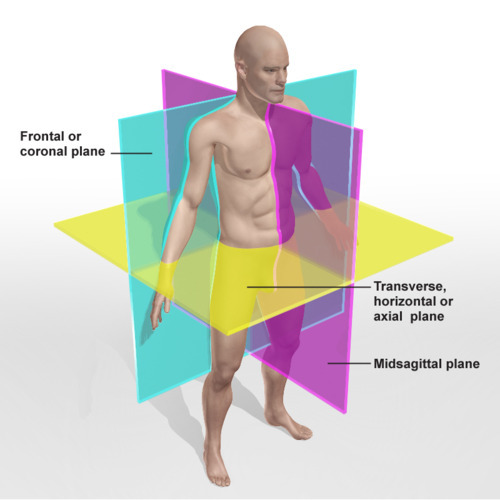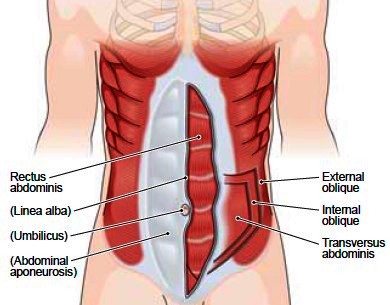To understand that academcally, you need to have the idea of how our body moves. Let's learn some basic concepts first.
Planes of Motions
First of all, there are three planes of motion to help examine bodily movements:
 |
| internet source: planes of motion |
- Saggittal plane- The Sagittal plane passes through the body front to back, so dividing it into left and right. Movements in this plane are the up and down movements of flexion and extension.
- Frontal plane- The frontal plane divides the body into front and back. Movements in this plane are sideways movements, called abduction and adduction.
- Transverse plane- This plane divides the body into top and bottom. Movements in this plane are rotational in nature, such as internal and external rotation, pronation and supination.
Our natural position is usually anatomical neutral which means standing upright, legs together and knee straight, toes pointing straight forwards, arms by the side, palms facing forwards. Before the start of the dance, we may the feet are placed to home position (read all foot positions here) with weight over one foot, or get into the preparation step which is no longer neutral. However, the 'standing upright' applies to dancing most of the time, even when you do the styling.
We can easily draw a few observation according to these planes,
- We are able to separate the upper and lower part of our body, so the hips and shoulders can be moving towards opposite direction and we can set our CBM (which maintain natural balance, dancing only exaggerate it a little bit) quite easily.
- As the body moves as a plane, when the left side of the body goes forward, the right side needs to go back, therefore, left hip goes back, right hip must goes forward.
- As the body moves as a plane, when one side of the hip goes up, the other side goes down.
General coordinations
Secondly, muscles motion is a result of a whole bunch of related nerves, muscles & joints, which means in order to move your legs, you are urging the whole body to present your action.
- Stand yourself anatomical netural and weight evenly distributed between two feet, then put all weight onto one foot, and bent the unweighted one. The hip drops to one side. Next try is to close the knee at the same time you drop the knee. Repeat this a few times.
- If you need to move the sideway, forward or backward, move the foot first before you send the weight. Plant the foot in the correct place first, then the next natural action your body will do is to move the hip before moving the upper body. If you are really doing the ball-flat step this is easier, since it is harder to send the whole body onto the ball.
- You are about to have the Cuban hip then, to further make it more controlled and collected, try reaching the greatest range of motion. You may need to give a nudge moving the hip which require the contraction and relaxation of the abdomen muscle. But remember, the initiate action takes at the leg.
 |
| internet source: abdomen muscle |
*part 1- how does it look in diff dances
*part 2- (you are here) the mechanism
*part 3- how to achieve it
...................................................